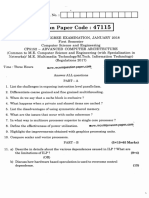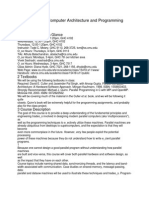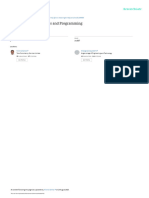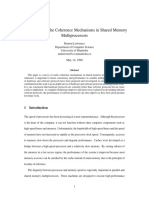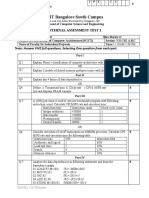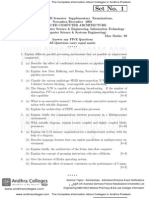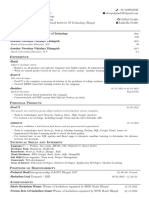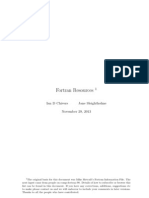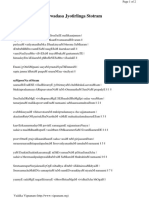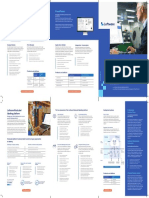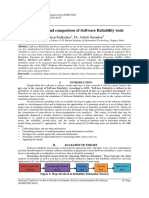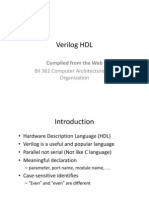0% found this document useful (0 votes)
33 views2 pagesMulticore Architecture
The document outlines the examination structure for a course on Multicore Architecture and Programming, scheduled for April-May 2025. It includes questions on topics such as cache coherence, parallel computing concepts, OpenMP and MPI constructs, and performance considerations. The exam is divided into three parts, with varying question formats and marks allocation.
Uploaded by
sobipunithaCopyright
© © All Rights Reserved
We take content rights seriously. If you suspect this is your content, claim it here.
Available Formats
Download as PDF, TXT or read online on Scribd
0% found this document useful (0 votes)
33 views2 pagesMulticore Architecture
The document outlines the examination structure for a course on Multicore Architecture and Programming, scheduled for April-May 2025. It includes questions on topics such as cache coherence, parallel computing concepts, OpenMP and MPI constructs, and performance considerations. The exam is divided into three parts, with varying question formats and marks allocation.
Uploaded by
sobipunithaCopyright
© © All Rights Reserved
We take content rights seriously. If you suspect this is your content, claim it here.
Available Formats
Download as PDF, TXT or read online on Scribd
/ 2

